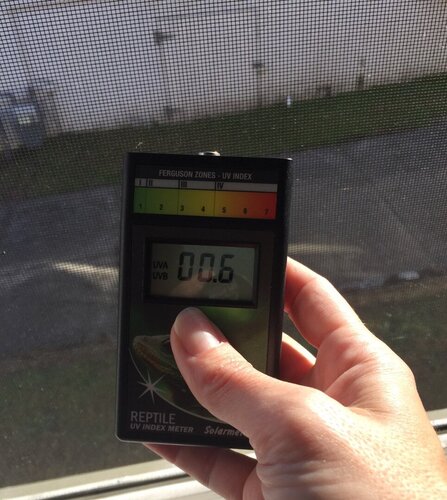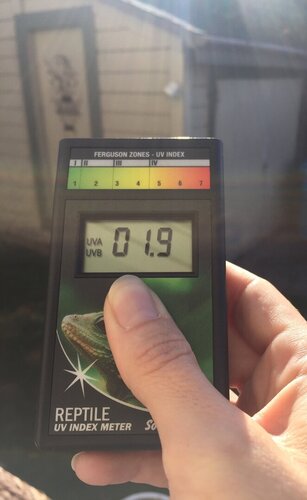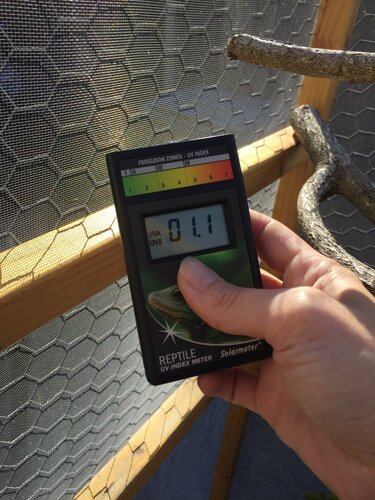CasqueAbove
Chameleon Enthusiast
For a while now I have been opening my window on sunny days, for some good uvb. Well now that I can test it with a solar meter, it is only 0.1 . I was surprised it was so low. I checked outside in the sun. In fairness outside was only 1.6. This is in Oregon at 3pm.
I am thinking the fiberglass screen blocks more UVB than aluminum. I know some are made that way, but even just normal window screen.
I am thinking the fiberglass screen blocks more UVB than aluminum. I know some are made that way, but even just normal window screen.







